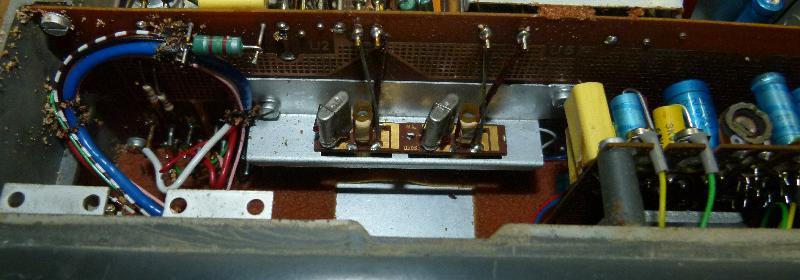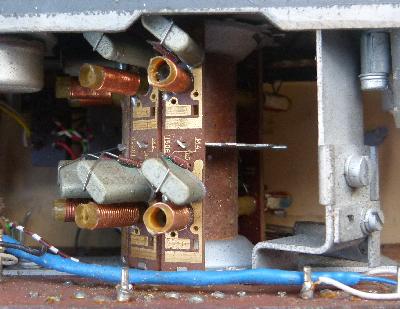
The Philips CMT is a single- to twelve-channel crystal-controlled VHF or UHF mobile transceiver. They were made in the early 70's and use a then-state-of-the-art built-in switchmode power supply, running at almost-audio frequency. While this makes the set voltage- and polarity-insensitive, it can also impart a distinctive hum on the audio.
I have about a dozen of these, mostly incomplete spares sets.

There are many versions of the CMT, with different controls. This one is a single-channel transceiver even though the front panel has a hole for the channel selector.

Nicely built. From left to right, the RF output stage, the RF driver, the receiver oscillator, the receive RF/IF and the switchmode PSU. Note the two speakers at the bottom right.

The PSU is marked with its operating voltage (12, 24 or 36V that I know of) and there's a hole in the case so that one can identify the PSU from the outside.

At the left is the underside of the RF output stage, audio and IF stages, and the switchmode PSU power transistors. Antenna change-over relay at the bottom left.

Transmit crystal on the left, receive crystal on the right.


This is an 8 channel turret from a different (parts) rig. The whole turret turns, bringing a pair of crystals into contact with the receive (inner, on the right) and transmit (outer, on the left) fingers. Each crystal can be pulled to the right frequency with a series inductor.
The turret can accommodate 12 pairs of crystals, this specific one was fitted with eight crystal carrier PCBs only. Note that this is the exact same PCB that is used in the single-channel version.

The sub-chassis is insulated from the outer shell and bypassed liberally.
All in all a well-conceived, quite well designed radio that could have been much improved had switchmode technology been just a little better.
I scanned a UHF CMT Manual.
|
|
Back to Wouter's Page | (This page last modified 2016-04-19) |